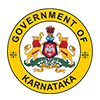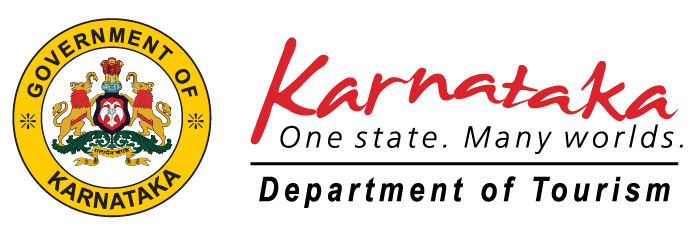Gadag district was formed in 1997 when it was carved out from Dharwad district. Gadag is surrounded by Haveri in the south, Dharwad in the west, Belagavi in the north west, Bagalkote in the north, Koppal in the east and Ballari in the south east. According to legends, Gadag was one of the maha agraharas founded by Janamejaya and was a renowned seat of higher learning with 72 mahajanas. Gadag is also known for its printing presses and handlooms. So much so that there is a legend about Gadąg that if you throw a stone in town it would either land at a printing press or on a handloom. Gadag has a lot of printing presses and Betageri, which is an adjacent town is famous for handlooms. Two major rivers flow through Gadag namely Malaprabha in the northern border and Tungabhadra in southern border. Major crops include Wheat, Jowar, Maize Bengal Gram, Green Gram, Groundnut, Sunflower, Sugarcane and Cotton.
Since many centuries, Gadąg has had a distinct imprint in the fields of art & literature, cultural and spirituality. Gadag immediately brings to mind the name of Narayanappa, popularly known as Kumaravyasa, the author of Karnataka Bharatha Katha Manjari (it is the classic Mahabharata in Kannada). Gadag is also home to the famous blind singer Pandit Ganayogi Panchakshari Gawayi and his music school Veereshwara Punyashrama. Gadąg has also been an important seat of Hindustani music in north Karnataka. It is home to the iconic Hindustani singer Bharata Ratna Pandit Bhimsen Joshi and Pandit Puttaraj Gawai. Sri. Huilgol Narayan Rao, a popular playwright in the modern Kannada literature and a freedom fighter is also from Gadąg. The Tontadarya Matha of the Veerashaiva sect of Hinduism is engaged in many educational and literary activities in and around Gadag.
Trikuteshwar Temple, Veeranarayana Temple, Dambal, Lakkundi and Magadi Bird Sanctuary are major tourist attractions in this district. Gadag’s temples represent some of the best examples of Kalyana Chalukyan art.
For further information, visit the official district website click here!
Heritage Sites
- Nargund: Located about 60 km from Gadag, Nargund has a hill with a fort. It is believed that the place got its name from nari (jackal) and kunda (hill). It is a historical place with a history of more than 1000 years beginning with Rashtrakuta times. Its modern history begins from 1674 when Shivaji Maharaj built a citadel here. In 1857-58 uprising against the British, the chief of Nargund was Bhaskar Rao who has been described as “the most intelligent of the Bombay-Karnataka chiefs” to have revolted.
- Gajendragad Fort: 55 kms from Gadag, second largest city in Gadag, popular for Shivaji fort and Kalakaleshwara temple.
- Sudi: 50 kms from Gadag, home for several chalukya era monuments and twin towered Mallikarjuna temple
Religious Places
- Trikuteshwara Temple: The main attraction of Gadag is Trikuteshwara Temple which is in a large complex. The temples of Trikuteshwara and Saraswati are situated adjoining to each other in this complex. Trikuteshwara with three Ishwara lingas in a line is a stupendous and well-preserved Rashtrakuta temple of architectural importance. Nearby is a small temple dedicated to Goddess Saraswati with a damaged idol and is of Kalyana Chaluckyan style. It is noted for its carvings and pillars; the pillars are considered most ornate among Kalyana Chaluckyan pillars.The Someshwara temple is a later Chalukyan temple dedicated to Ishwara. Nearby this temple is a dilapidated temple of Rameshwara. Another ancient temple, the Kalmeshwara, built in about the 11th century is also of architectural importance and is situated in Betageri.
- Veeranarayana Temple: The Veeranarayana Temple built in Vijayanagara style is fairly big and is dedicated to Lord Vishnu. According to one version, this temple is one of the five Narayana temples like those at Belur and Talakad built in about 1117 AD by the Hoysala King Vishnuvardhana after his acceptance of Vaishnavism. It is said that famous Kannada poet Mahakavi Kumaravyasa composed his epic Karnataka Bharatha Katha Manjari (it is the classic Mahabharata in Kannada) in this temple. Kumaravyasa Kalyanamantapa, a small shrine dedicated to Sarpeshvara and a Brindavana of Raghavendraswamy have been recent additions to this temple.
- Lakkundi: Lakkundi is a modest village situated 12 km southeast of Gadag which is of great historical and archeological importance. This sedate village is peppered with over 50 temples and 29 inscriptions dating back to the Kalyana Chalukya period. Majority of these temples are in damaged condition and among these the Kashi Vishweshwara Temple is the most intricately designed and poses a spectacular structure. It is told that the Kalyana Chaluckya builders reached the zenith in architecture in this temple and is considered the finest existing specimen of Hindu temple decorative work. Apart from temple art, Lakkundi is also known for its step wells. Among these the “Musukina Bhavi” near Manikeshwar Temple is of architectural interest.
- Doddabasappa Temple, Dambal: Dambal is a village situated about 21 km from Gadag. The temple of Doddabasappa dedicated to lshwara is of architectural importance since it is of a different style from any other temple found either at Gadag or Lakkundi, and is having a stellar garbhagriha with multiple corners. Another temple nearby of Someshwara is said to be the jinalaya of the 11th century founded by the local merchants.
- Rona: 40 kms from Gadag, Rona is home to several historic temples.
- Hombal: Popular for Shankara temple of Kalyana Chalukya era
- Konnur: Popular for Parameshvara and Rameshvara temples
- Lakshmeshwara: Home to Lakshmaneshwara temple, Someshwara temple, Jamma Masjid
Others
- Lakkundi Utsava: Lakkundi Utsava (festival) is an annual festival held in the town of Lakkundi, near Gadag in north Karnataka. Lakkundi Utsava falls in February/March every year. Attending Lakkundi Utsava will enable visitors to experience a wide range of cultural performances, dance and art forms of Karnataka in one place. Applications are invited from individuals and teams looking to exhibit their talents on stage and curated artists and performers entertain visitors and unveil Karnataka’s cultural heritage. Lakkundi Development Authority supervises organization of Lakkundi festival.
- Bheeshma Kere: Bheeshma kere is a lake with recreational activities right inside Gadag town. Statues of Gangadevi and Basavehwara are located in Bheeshma Kere. Boating is a must try activity in Bheeshma kere.
- Kappata Gudda: 30 kms from Gadag, a medium size hill (750 meters in height).
- Singatalur: Singatalur is a village on the banks of Tungabhadra River, 57 kms from Gadag city, known for its Veerabhadreshwara temple and a watch tower that offers great view of the river.
- Shirahatti: home to The Fakir Swamy Matha and Avvalingavva Matha
Tour Location
Gadag is 390 kms from Bengaluru and 63 kms from Hubballi.






